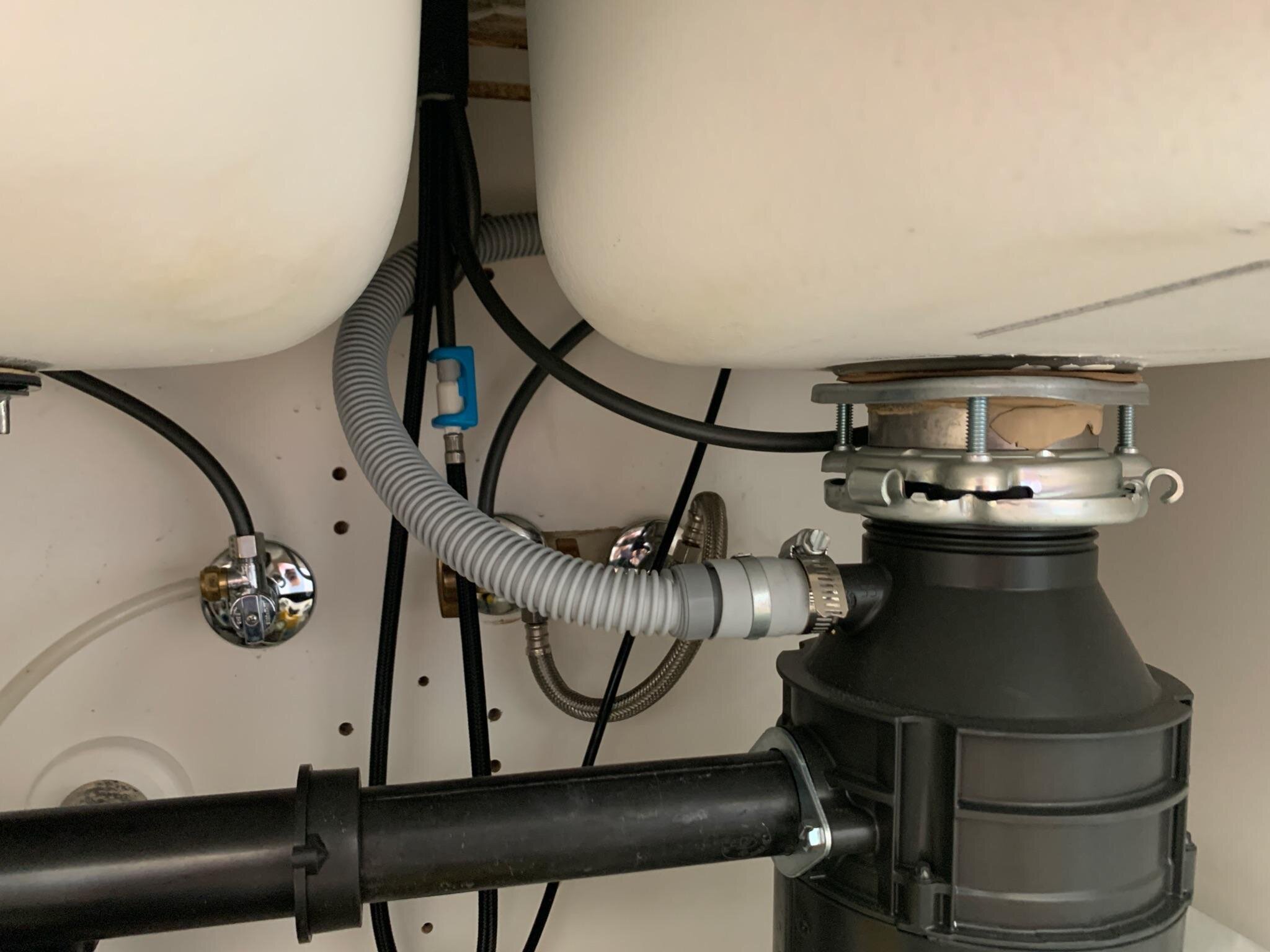What is a dishwasher high loop and why do you need one?
A dishwasher high loop is one of the most common defects found during a home inspection and it is very simple to repair.
(An example of drainline without a high loop)
What is a high loop?
A dishwasher is usually installed to drain directly into the garbage disposal or sink plumbing. If the drain line is installed with a proper high loop, the drain line is raised and connected to the underside of the countertop or cabinet creating a high loop. It basically looks like an upside down P-trap that is commonly found under the sink.
Why is a high loop needed?
(An example of a drainline with a high loop)
A dishwasher drainline without a high loop would be connected to the disposal and then laid horizontally in the bottom of the cabinet. Without a high loop, dirty water from the sink can collect into the drainline and even back up into the dishwasher. This can cause odors and allow waste water from the sink to enter into the dishwasher.
How is a high loop installed?
Installing a high loop is generally pretty easy. The easiest method is to install a bracket to the underside of the countertop to hold the drain line. Another alternative is to use a zip-tie to hold the
It is becoming fairly common in new dishwashers where the manufacturers are pre-installing them. Although this is becoming a regular practice, a home inspector will still call out the lack of a visible high loop. While the person who installed the dishwasher may have seen a pre-installed high loop on the side of the dishwasher and not installed one under the sink, the home inspector has no way of knowing if this is the case and will write it up as a defect. It is recommended to check the manufacturing specifications of the dishwasher to see if the high loop is already built in, but most dishwasher manufacturers will still recommend the high loop be added under the sink during installation.


